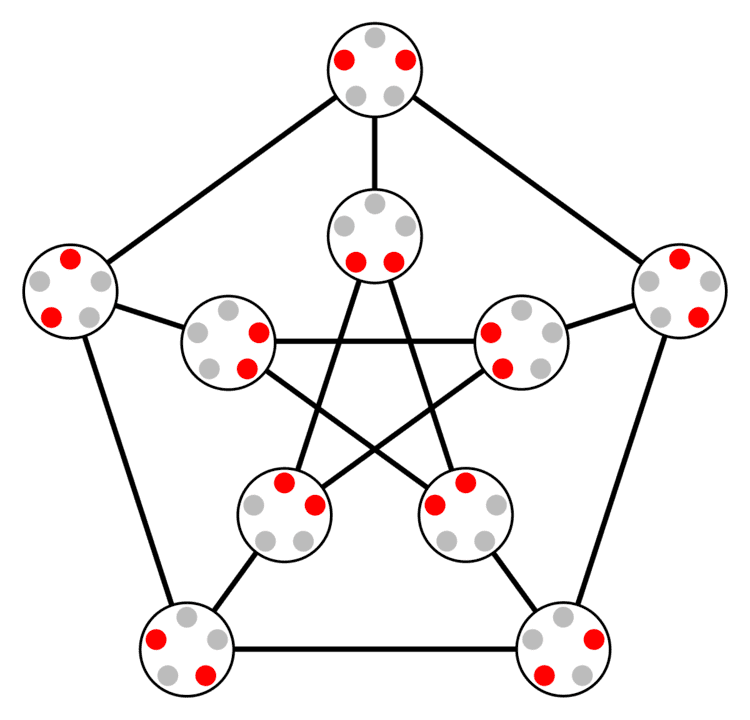Notation KGn,k, K(n,k) | ||
 | ||
Vertices ( n k ) {\displaystyle \textstyle {\binom {n}{k}}} Edges ( n k ) ( n − k k ) / 2 {\displaystyle \textstyle {\binom {n}{k}}{\binom {n-k}{k}}/2} Chromatic number { n − 2 k + 2 n ≥ 2 k 1 otherwise {\displaystyle \left\{{\begin{array}{ll}n-2k+2&n\geq 2k\\1&{\text{otherwise}}\end{array}}\right.} Properties ( n − k k ) {\displaystyle \textstyle {\binom {n-k}{k}}} -regulararc-transitive | ||
In graph theory, the Kneser graph KGn,k is the graph whose vertices correspond to the k-element subsets of a set of n elements, and where two vertices are adjacent if and only if the two corresponding sets are disjoint. Kneser graphs are named after Martin Kneser, who first investigated them in 1955.
Contents
Examples
The complete graph on n vertices is the Kneser graph KGn,1.
The complement of the line graph of the complete graph on n vertices is the Kneser graph KGn,2.
The Kneser graph KG2n − 1,n − 1 is known as the odd graph On; the odd graph O3 = KG5,2 is isomorphic to the Petersen graph.
Properties
Related graphs
The Johnson graph Jn,k is the graph whose vertices are the k-element subsets of an n-element set, two vertices being adjacent when they meet in a (k − 1)-element set. For k = 2 the Johnson graph is the complement of the Kneser graph KGn,2. Johnson graphs are closely related to the Johnson scheme, both of which are named after Selmer M. Johnson.
The generalized Kneser graph KGn,k,s has the same vertex set as the Kneser graph KGn,k, but connects two vertices whenever they correspond to sets that intersect in s or fewer items (Denley 1997). Thus KGn,k,0 = KGn,k.
The bipartite Kneser graph Hn,k has as vertices the sets of k and n − k items drawn from a collection of n elements. Two vertices are connected by an edge whenever one set is a subset of the other. Like the Kneser graph it is vertex transitive with degree
